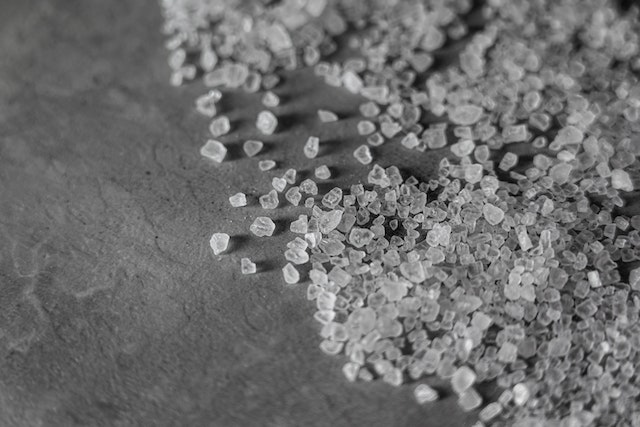What is Black Salt? | Types of Black Salt

What is Black Salt?
There are several types of black salt, the most common being Himalayan black salt. It is rock salt obtained from salt mines in the Himalayan regions of Pakistan, Bangladesh, India, and Nepal.
The use of black salt was first documented in Ayurvedic medicine, a traditional holistic health practice originating in India.
Himalayan black salt is said to have therapeutic qualities by Ayurvedic practitioners. But whether these assertions are supported by solid research is debatable. Interestingly, Himalayan black salt is reddish brown in color, in spite of its name.
Types and Uses of Black Salt:
There are three main types of black salt: Himalayan black salt, black lava salt, ceremonial black salt, ceremonial black salt, ceremonial black salt
Himalayan black salt:
It is sometimes called Indian black salt or Kala Namak.
It is recognized to have medicinal properties, but there is little research to support this. It has a pungent, salty, umami taste and is widely used, especially in Asian and Indian cuisine. Also it is used in vegan cooking because of its subtle eggy, sulfuric flavor.
Black Lava Salt:
You can find black lava salt, also known as Hawaiian black salt, because it usually comes from Hawaii. While Himalayan black salt is pinkish brown in color, black lava salt is black in color, as the name suggests.
It has a distinctive earthy flavor and is used as a salt to sprinkle on food to finish it. It imparts a delicate, smoky flavor to food, making it ideal for smoky dishes.
Ritual Black Salt
Black salt, also called witch salt, is a mixture of ash, sea salt, charcoal, and sometimes black dye. It is not used for consumption.
Although it has not been scientifically tested, some believe that ritual black salt has magical powers to ward off negative spirits. Believers can sprinkle it in the garden or store it in a jar under the bed. While this preventive method is probably harmless, it is not recommended and there is no evidence to support its use.
How is black salt different from regular salt?
Black salt is different from regular table salt in both process and taste.
It is produced in several ways. Himalayan black salt originates from Himalayan pink salt, a type of rock salt. Traditionally, it is mixed with herbs, seeds, and spices and heated at high temperatures.
Today, most black salt is synthesized from a combination of sodium chloride, sodium sulfate, sodium bisulfate, and iron sulfate. This salt is then mixed with charcoal and heated until the final product is obtained.
The final product contains impurities such as sulfates, sulfides, iron, and magnesium, which determine its color, odor, and taste. These impurities are probably not harmful to health. Sulfates are considered safe to ingest and are used in some foods to inhibit the growth of harmful bacteria.
Black lava salt, on the other hand, is traditionally obtained from volcanic lava. Today, it is commonly obtained by mixing sea salt with activated charcoal. On the other hand, common table salt in salt containers is highly processed and refined, and most trace elements have been removed.
Most table salt is produced from large rock salt deposits formed by the evaporation of ancient marine evaporite rock salt, which is found primarily in the United States, Canada, Germany, Eastern Europe, and China. Various methods of extraction of such salt are available and require different types of equipment.
Differences in Taste:
The black salt variety has more pronounced flavor characteristics than regular salt.
Himalayan black salt has a sulfuric flavor characteristic of Asian and Indian cuisine, while lava black salt has an earthy, smoky flavor. Common table salt tastes salty, but can also have sweet, sour, and bitter nuances.
This type of salt is also found in processed foods. In fact, more than 75 percent of daily sodium intake is due to salt in processed foods.
However, salt is added to many foods to enhance their flavor.
Expected health benefits:
Choosing black salt can provide numerous health benefits.
First off, black salt can have a lower sodium content than table salt. Additionally, it has fewer chemicals and offers additional medicinal advantages.
It may consist of less sodium than table salt:
Commercial table salt may have a higher sodium content than natural black salt. Black salt may be a better choice if you suffer from high blood pressure or want to reduce your sodium intake, as it is believed to contain less sodium.
High-sodium diets are associated with high blood pressure, and high sodium levels can increase blood pressure in people with high sodium levels.
When using black salt, it is important to remember to check nutrition labels, as the sodium content varies greatly from brand to brand.




